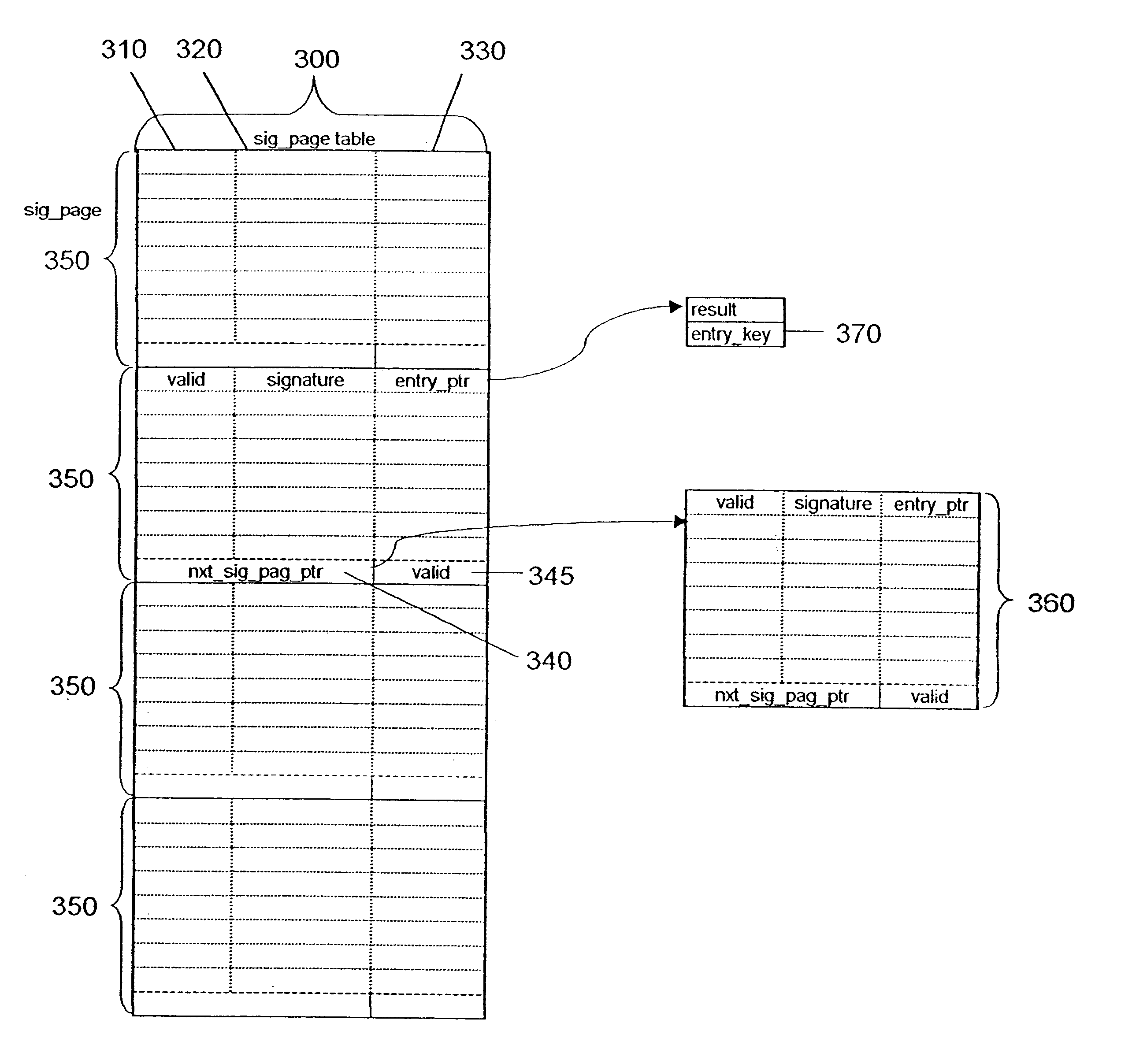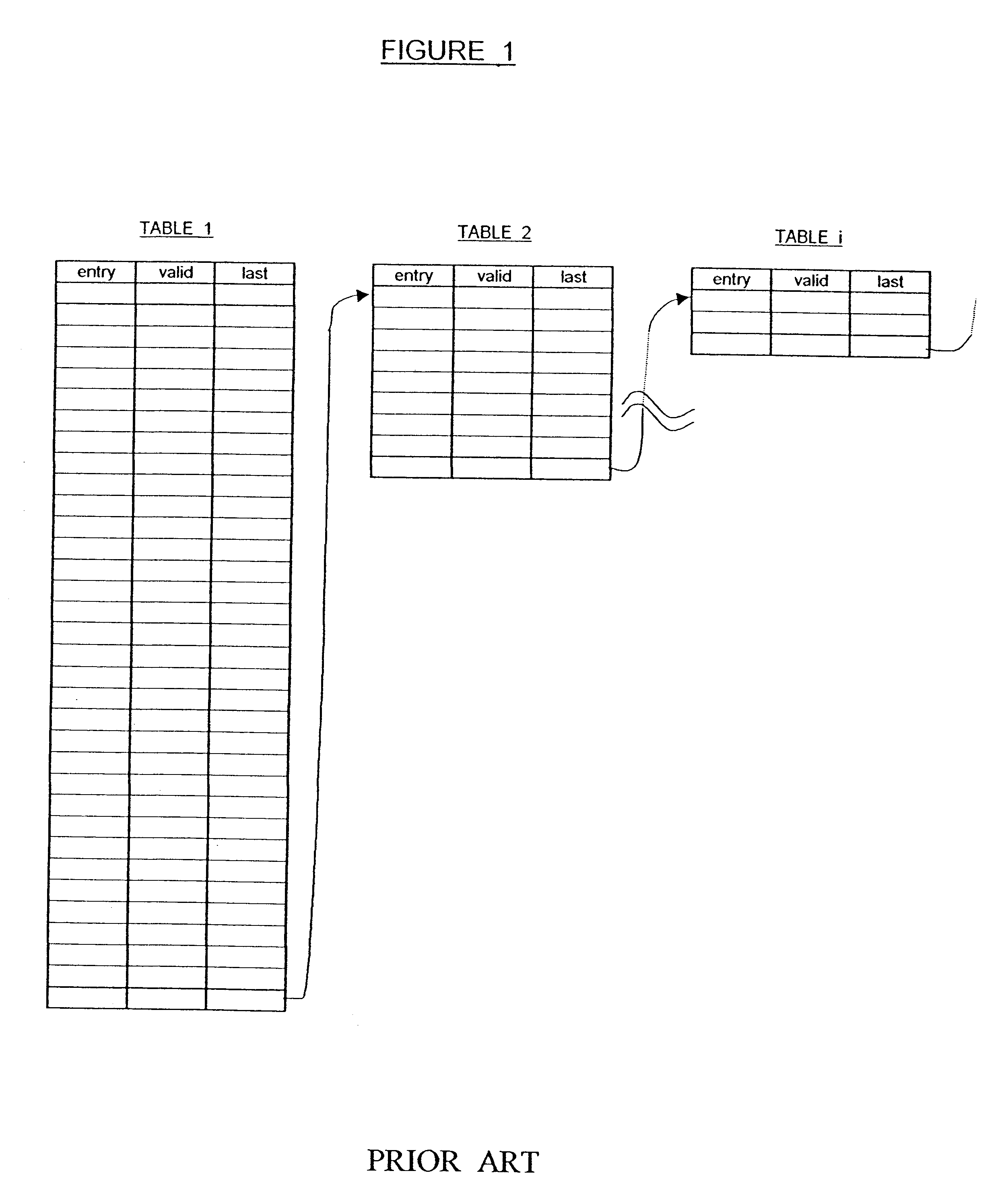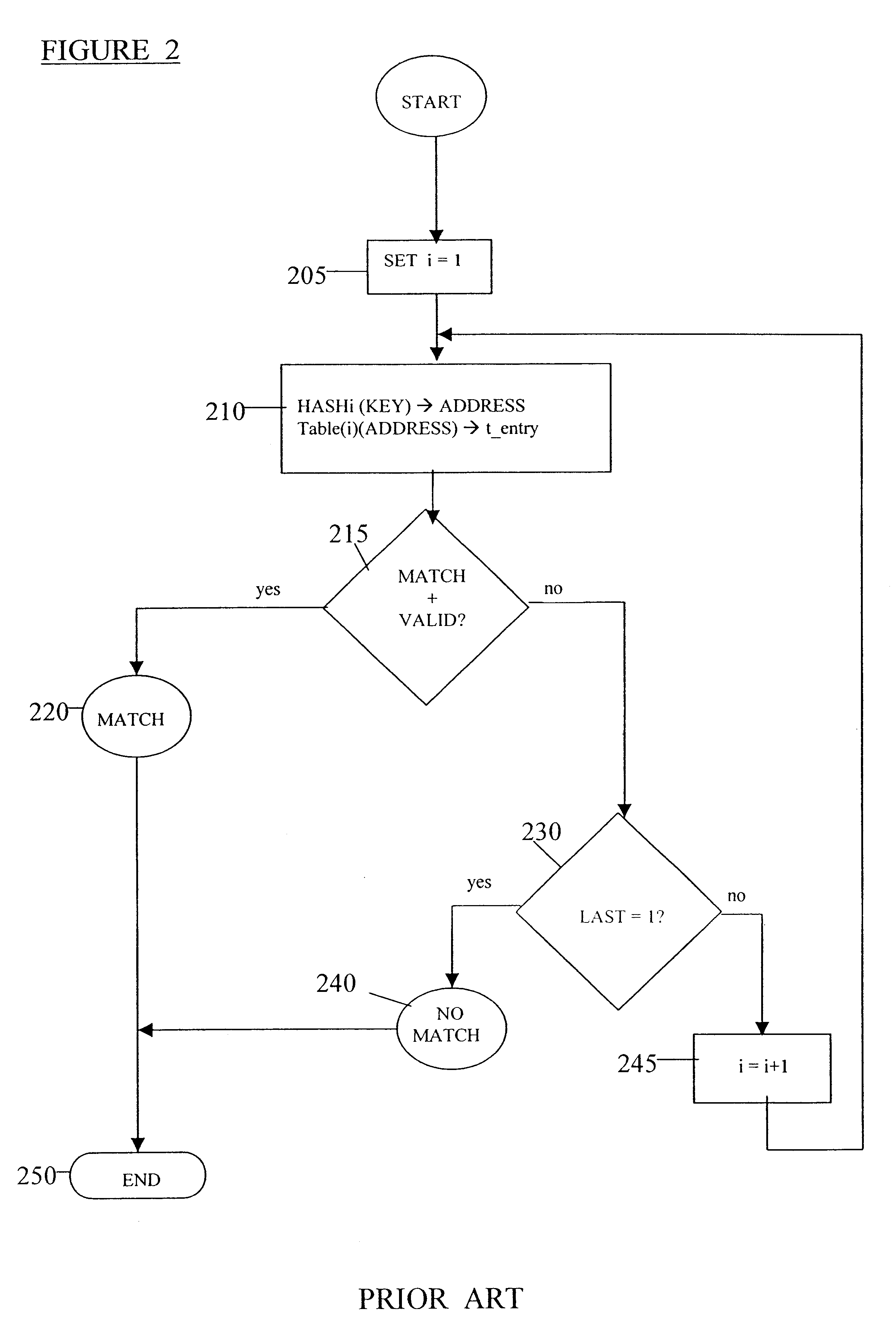Deterministic search algorithm
a search algorithm and algorithm technology, applied in the field of deterministic search algorithms, can solve the problems of premature use of advanced methods, excessive time-consuming, and "collisions" in storage or retrieval operations
- Summary
- Abstract
- Description
- Claims
- Application Information
AI Technical Summary
Problems solved by technology
Method used
Image
Examples
example 1 (
PRIOR ART)
Consider a system with 256,000 MAC (Media Access Control) address entries, with each MAC address filling 48 bits (6 bytes). Associated with each MAC address is a "result" containing priorities, routing directions, etc. The memory allocation for each result depends on the particular application, but typically each result fills 96 bits, such that the total allocation for MAC address with result is 144 bits. Using an efficient, prior art multiple hashing routine, as described above, memory space is allocated such that the first hash table has roughly four empty entries per filled entry.
Under the above fill conditions, a good hash function typically has a hit ratio of 70-80%, i.e., a 70-80% probability of funding the searched entry. Assuming an 80% hit rate, 204,800 keys are successfully entered in the first hash table. Accordingly, 1,024,000 entries (each entry consisting of 144 bits) need to be allocated for the first hash table.
The remaining 20% (51,200) of the keys are reh...
example 2
Consider the system of Example 1 having 256,000 MAC address entries, with each MAC address (48 bit) and associated result (96 bit) filling a total of 144 bits.
According to the present invention, and as described in more detail above, the MAC address and corresponding result are not entered into the hash tables. Each key is automatically hashed twice to determine the location of the signature page (HASH1) and a signature (HASH2) designed to differentiate between any HASH1 collisions. Each signature page, by way of example, has 8 rows for accommodating different signature corresponding to the same signature page. Each signature requires only 6 bits and 18 bits for the pointer, as opposed to 144 bits for the full MAC address and associated result described in Example 1.
The number of addresses or signature pages in the first table is 64,000, i.e., 1 / 4 of the number of keys. This compares very favorably with the 1,024,000 entries (each entry consisting of 144 bits) allocated for the firs...
PUM
 Login to View More
Login to View More Abstract
Description
Claims
Application Information
 Login to View More
Login to View More - R&D
- Intellectual Property
- Life Sciences
- Materials
- Tech Scout
- Unparalleled Data Quality
- Higher Quality Content
- 60% Fewer Hallucinations
Browse by: Latest US Patents, China's latest patents, Technical Efficacy Thesaurus, Application Domain, Technology Topic, Popular Technical Reports.
© 2025 PatSnap. All rights reserved.Legal|Privacy policy|Modern Slavery Act Transparency Statement|Sitemap|About US| Contact US: help@patsnap.com



